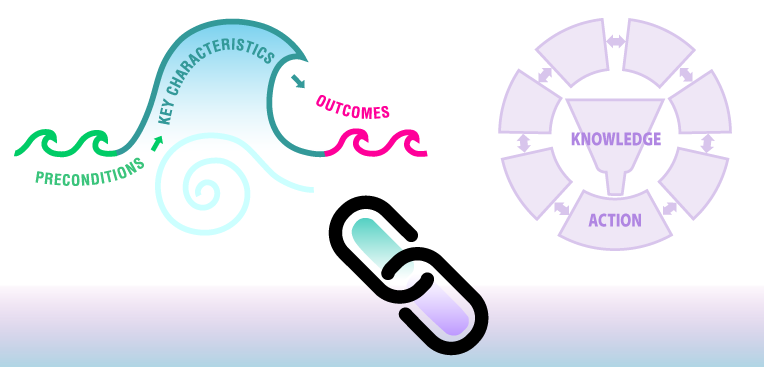

Linking this key characteristic to other elements of the Social Movement Action Framework:
Each of the elements of the Social Movement Action (SMA) Framework is dynamic and interrelated. For example, networks bring together intrinsically motivated individuals who have a shared concern or a strongly desired change and a receptivity to change and an urgent need for change. Through their involvement in a network, they emerge as leaders engaged in individual and collective action. These experiences further the collective identity of the individuals and agencies. By recruiting more individuals to engage in the social movement, momentum is supported.
Linking this key characteristic to the action cycle phases of the Knowledge-to-Action Framework:
You and your change team’s capacity in social movement actions may be enhanced and/or accelerated by the addition of some of the action cycle phases of the Knowledge-to-Action (KTA) Framework, as the two frameworks are complementary. In addition to the two linking examples described earlier in this section, there can be many other points of connection between the two frameworks. Below are three more examples for your consideration:
- Adapt knowledge to local context: This phase of the KTA action cycle can help you and your change team in assessing where your networks reside and what types of stakeholders comprise your network. Are there other settings and types of stakeholders who can leverage important resources that can help you grow your social movement? Remember that networks function to spread campaign messages, promote dialogue and diffuse ideas that support collaborative efforts. How can your networks help spread campaign messages in their local settings?
- Assess barriers and facilitators: Your networks are your communication channels and act as a platform on which you can access important resources and build social capacity. What are some of the factors that help and hinder your networks from growing? Assessing barriers and facilitators can help you minimize/circumvent barriers and leverage facilitators to help you build and fortify your networks.
- Sustain knowledge use: Sustaining engagement in networks can help change teams sustain the change being mobilized. Through networks, change teams can learn how others are sustaining a change and the impact it is having on outcomes.
For more discussion of the dynamic links between the elements of the SMA Framework to one another and to the KTA Framework, see the section ‘Accelerate your success with the Leading Change Toolkit™.
